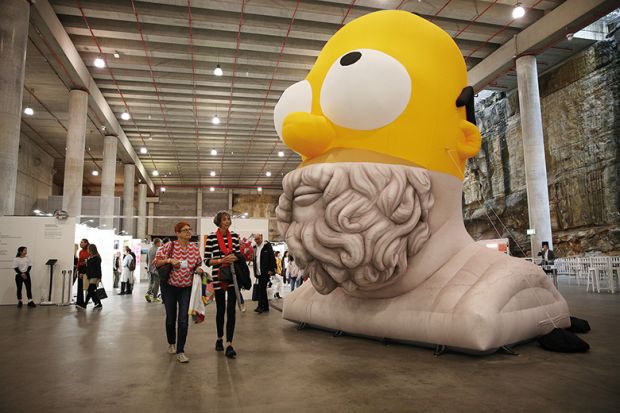Australia’s soaring inflation rate, propelled to a 21-year high partly by a hike in tuition fees, will put additional pressure on the next federal government to fund more university places and reduce fees for humanities degrees.
The consumer price index (CPI) reached 5.1 per cent over the 12 months to March 2022, eclipsing the 5 per cent figure set during the global financial crisis in 2008. It is the highest rate registered since 2000 and 2001, when Australia introduced a 10 per cent consumption tax.
High inflation is bad news for students, who face not only steep prices for staples like rent and food but also mounting tuition fee debt. While Australia’s income-contingent student loan system is interest-free, CPI is applied to the loan balances.
Australian National University policy expert Andrew Norton said generation-high inflation would be particularly hard on humanities graduates, after their tuition fees were more than doubled as part of the Job-ready Graduates (JRG) reforms. Humanities students now face fees of A$14,630 (£8,350) a year – several thousand dollars more than those faced by counterparts studying for the richly remunerated occupations of medicine, dentistry and veterinary science.
“When you’re getting to the point of A$50,000 for an arts degree, it is a problem both for the students – because this will be hanging over many of them for decades – and for the government, because there’s a high risk that it’ll never be repaid. And if it is repaid, it’ll take a very long time. It’s really not in the interests of either party for this system to stay in place,” Professor Norton said.
High inflation also spells trouble for universities, whose teaching grants are not indexed sufficiently to keep pace with current inflation levels. Teaching grants increased by about 1.8 per cent in recent years and only 0.9 per cent this year, rising to several percentage points in the coming years.
The grants’ real value will decline if inflation stays at its current level, let alone if it reaches double figures – a common occurrence in the latter decades of last century. This could put further pressure on universities as they struggle to accommodate soaring student demand resulting from a mid-2000s baby boom which is projected to more than double the annual increase in the 18-year-old population in 2024 and 2025.
Universities receive their teaching grants in funding “envelopes” that do not specify student numbers. By and large, universities have used this flexibility to maximise student numbers and accommodate demographically fuelled demand. But Professor Norton said rising inflation could make this harder.
The “key issue” was whether the inflationary pressures reached salaries, which are by far universities’ biggest expense. “If wage costs go up, that will just put pressure on them to keep costs down,” he said. “And that probably means fewer student places.”
The surge in inflation has mainly been caused by the rising costs of fuel, housing, imported goods and food. But education has also been a major factor – particularly in the first three months of this year, when it was the largest single contributor to inflationary growth.
The Australian Bureau of Statistics attributed this to fee hikes under JRG. It said fewer students were now paying the pre-JRG fees which had been “grandfathered” for continuing students. “As students graduate, proportionately fewer are covered by the grandfathering arrangements,” it explained.






